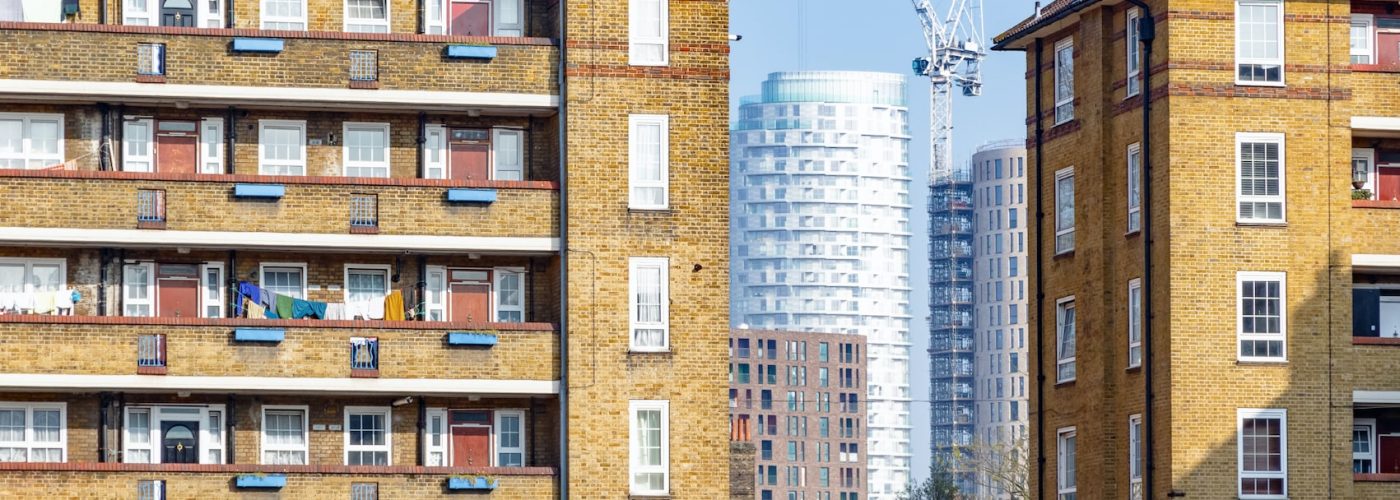- Research-led report reveals which towns in England and Wales urgently need Government intervention to kick-start their regeneration
- The report also reveals which towns are best placed to secure inward investment and grow organically, without the need for urgent Government intervention
- More than 360 of UK’s largest towns have been assessed based on housing affordability, job creation, population growth and accessibility
- Published by leading national law firm Shakespeare Martineau and planning and design consultancy Marrons, the report aims to inform funding decisions at a local and national level by highlighting towns most in need of investment
A new research-led report has revealed where public funding is urgently needed to kick-start town centre regeneration and support the UK Government’s Levelling Up agenda by stimulating investment in the most neglected areas of the country.
National law firm Shakespeare Martineau and planning and design consultancy Marrons have analysed data from the Office for National Statistics (ONS) and the Government’s Geospatial Data Commission in order to pinpoint towns where public funding is most needed, and those that are primed for private sector investment.
As part of the group’s More Than Stores report, which proposes policy solutions to arrest the decline of town centres across the UK, the Regeneration Index ranks 360 of the UK’s largest market towns* in England and Wales based on housing affordability, job creation potential, population growth and accessibility.
The research confirms that there is a clear North/South divide, with towns in the South East of England more resilient and successful in attracting public and private sector investment than those in the North. Their relative success is largely due to a more diversified townscape, supported by stable population growth and local job creation.
Regeneration Index – the ‘bottom 50’
Only two towns in the South East are ranked among the ‘bottom 50’ (of the Regeneration Index), which means that they urgently need Government support or other public sector investment to kick-start regeneration activity. By contrast, 37 towns in the ‘bottom 50’ are located in in the North of England – including Derby, Spennymoor (Durham), Barnsley (Yorkshire), Selby (Yorkshire), South Shields (Tyne & Wear) and Grimsby. The remaining 21 are located across the rest of England and Wales.
While the ‘bottom 50’ towns have been ranked ‘worst’ in terms of their regeneration readiness, it is hoped that identifying their plight will help to inform future public funding decisions at a local and national level.
Regeneration Index – the’ top 50’
Just six towns in the North of England – which is defined as the Midlands and beyond – and four in Wales, are in the ‘top 50’ (of the Regeneration Index), which means they are considered to be among those best placed to grow organically, without requiring urgent Government-backed intervention. The remainder are located primarily in the South of England.
The ‘top 50’ towns have been ranked best in terms of their regeneration readiness, which means they are best placed to secure inward investment and grow organically, without the need for urgent Government intervention.
The rankings have been published as the Government faces continued criticism over the allocation methodology behind its £4.8bn Levelling Up Fund, with critics claiming its broad reach is not targeted enough to help areas most in need of regeneration. The application process is also said to be onerous and bureaucratic, costing local authorities significant time and money when applying for funds.
Analysis from the Labour Party has revealed that London will receive a higher allocation of funding (from the Levelling Up Fund) than Yorkshire and the North East, the latter of which will receive almost half of the amount given to local authorities in the South East. Further research by the Institute for Public Policy Research has found that investment in deprived areas of the North of England is amongst the lowest of the world’s most advanced economies.

‘Bottom 50’
Ranked: towns where public investment is most required, according to the analysis
| Town | Region |
| Derby | Midlands |
| Caerphilly | Wales |
| Spennymoor | North East |
| Barnsley | Yorkshire |
| Bridgend | Wales |
| Selby | Yorkshire |
| South Shields | North East |
| Grimsby | Midlands |
| Halifax | Yorkshire |
| Workington | North West |
‘Top 50’
Ranked: towns best placed to grow organically, without requiring urgent Government-backed intervention, according to the analysis
| Town | Region |
| Wakefield | Yorkshire |
| Tewkesbury | South West |
| Cheshunt | East of England |
| Paignton | South West |
| Chard | SouthWest |
| Baldock | East of England |
| Boscombe | South West |
| Chesham | South East |
| Bridgewater | South West |
| Aldershot | South East |
Alex Smith, managing director of infrastructure and specialist markets at Shakespeare Martineau, said:
“Our Regeneration Index takes a magnifying glass to town-level investment and sets out to explain why some market towns urgently need Government intervention, whereas others are showing that they can support themselves. Previous studies have looked at this problem regionally or have placed a significant emphasis on cities. They have also assumed that funding is limitless. Both of these approaches overlook local disparities that only a granular, town-centre analysis can reveal.
“From the 360 market towns we have analysed, we’ve ranked the 50 most in need of public funding to kickstart regeneration. We’ve also ranked the 50 that are most ‘resilient’, where private sector investment is already evident and more likely to be forthcoming in the future,
“This isn’t determined geographically, but on a range of demographic and social factors, not least employment density, population growth and housing affordability in sustainable communities close to or within town centres.”
In a call to central government and local authorities, the report from Shakespeare Martineau and Marrons puts forward a series of policy recommendations to encourage town-centre regeneration. The NHS, planning, housing, and retail are all key areas of focus.
The report recommends the introduction of micro-scale ‘health hubs’ to provide treatment for minor complaints and health conditions on the high street – an activity which could also help to alleviate pressure on NHS services. Other recommendations include the creation of Town Centre Priority Zones and Regeneration Panels within local authorities, and a centralised National Brownfield Map. The latter should be supported by a ‘Prove it or Lose it’ policy, where brownfield land is put up for auction if planning consent is not secured within two years of it being advertised.
The report comes after another year of decline for high streets across the UK, where more than 50 shops closed each day in 2022, according to the Centre for Retail Research. The total number of retail closures last year was 17,000, 50% higher than in 2021, and the highest in five years. Closures from independent retailers made up 65% of the total.
Brian Mullin, head of Marrons, said:
“The evidence suggests that our high streets are suffering and continuing to decline. This critical urban fabric is often most vulnerable to economic turbulence. The decline of physical retail, which has been accelerated due to the pandemic, has compounded the challenge for businesses and communities.
“From a plan-making perspective, a retail-or-nothing mindset is a major contributor to the problem. Embracing diversity of our High Street offerings is key, but only part of the solution. Attracting inward investment might well involve potential tax incentives or CIL exemptions to address the viability difficulties associated with regeneration; whilst simultaneously creating more robust and vibrant town centre communities, helping to ameliorate our spiralling housing crisis and stimulating economic development to enable recovery and growth.
“Whilst there is no silver bullet for stimulating high street regeneration – there are meaningful and thoughtful changes suggested in our new report which are a step in the right direction.”
Key policy recommendations from the paper include:
- Integrating healthcare on the high street through micro-scale ‘health hubs’ that place clinical and other health-related services in town centres – for example, they could be used for vaccinations and blood donation
- Local authorities should set out Town Centre Priority Zones to support policy delivery, and establish Regeneration Panels to scope out re-purposing opportunities for existing buildings and engage with local developers
- Centralise the National Brownfield Map, with an auction triggered if brownfield land fails to secure planning consent within two years of it being advertised
- More later living real estate in town centres to meet demographic demand
- Greater use of ‘meanwhile space’, where vacant space is used on a temporary basis for housing, leisure and other community uses
- Central education hubs, using colleges and higher and further education to create footfall and economic activity
- Better use of ‘anchor heritage’ to draw in visitors and tourism and drive placemaking in increasingly homogenous town centres
- Greater use of build-to-rent (BTR) developments in occupying underutilised brownfield land and space ‘above the shopfloor’ to make best use of former retail premises
- Greater provision of housing on the periphery of town centres
- Logistics and micro-fulfilment centres to help support the ‘gig economy’ and fill non-consumer facing spaces
The UK Government has committed a total of £9.9bn to be spent over the next five years on town centre regeneration. Commitments include the £1bn Future High Streets Fund, the £2.6bn Towns Fund, the £4.8bn Levelling Up Fund, an estimated £250m in The National Lottery Heritage Fund, and £7.4m from the High Streets Heritage Action Zone scheme.
Building, Design & Construction Magazine | The Choice of Industry Professionals





